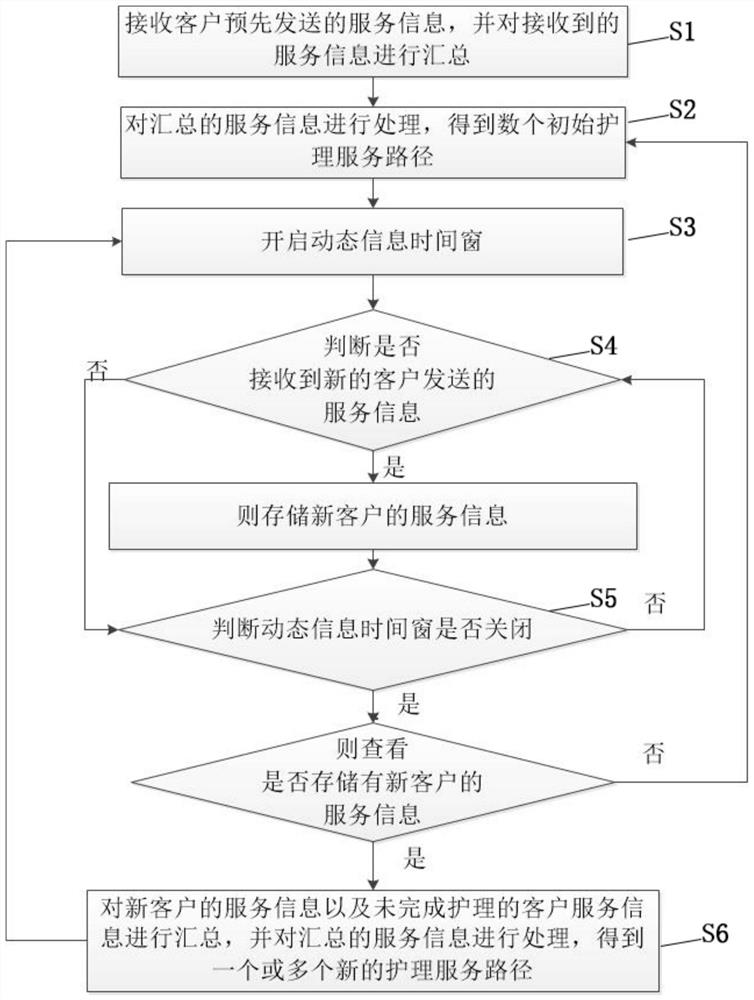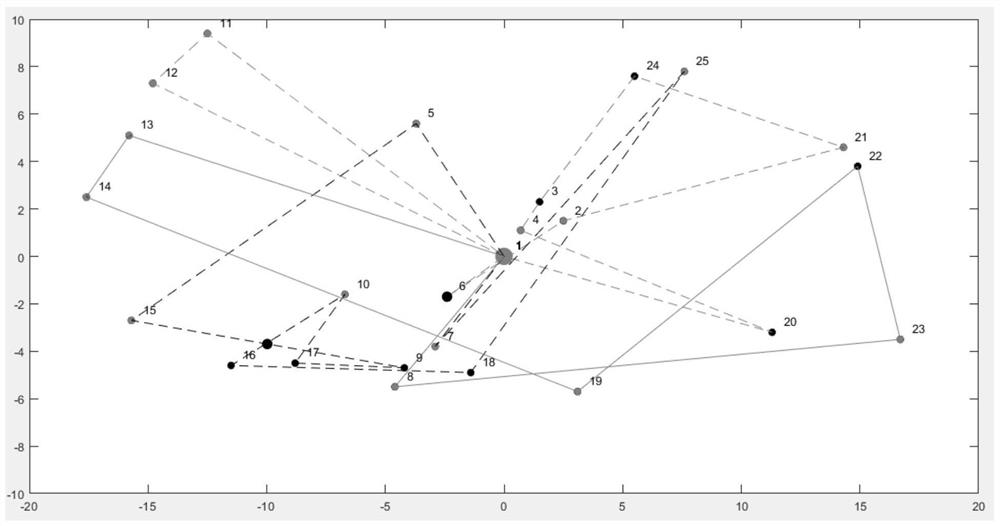Multi-level family care scheduling method under dynamic requirements and system thereof
A technology for home care and scheduling methods, applied in the field of home medical care, can solve the problems of increased cost of nursing centers, decreased customer satisfaction, and inability to respond in time for scheduling
- Summary
- Abstract
- Description
- Claims
- Application Information
AI Technical Summary
Problems solved by technology
Method used
Image
Examples
Embodiment 1
[0054] This embodiment provides a multi-level family care scheduling method under dynamic demand, such as figure 1 shown, including:
[0055] S1. Receive the service information sent by the customer in advance, and summarize the received service information;
[0056] S2. Process the aggregated service information to obtain several initial nursing service paths;
[0057] S3. Open the dynamic information time window;
[0058] S4. judge whether to receive the service information that new client sends, if so, then store the service information of new client, and then execute step S5; If not, then execute step S5;
[0059] S5. Determine whether the dynamic information time window is closed, if not, then continue to execute step S4; if so, then check whether the service information of the new customer is stored, if not, then continue to execute the initial nursing service path; if so, then execute step S6;
[0060] S6. Summarize the service information of new customers and unfinish...
Embodiment 2
[0123] The difference between the multi-level home care dispatching method under a kind of dynamic demand in this embodiment and the first embodiment is:
[0124] In order to verify the effectiveness of the model and algorithm in this embodiment, the algorithm is programmed with Matlab2018a, and the execution environment of all numerical experiments is Intel(R) Core(TM) i5-4210U CPU@ 1.70GHz (2401MHz), using Microsoft Windows 8.1 operating system. The calculation results and analysis are given below.
[0125] Initial parameters and optimized routes
[0126] The coordinates of a nursing center are (0,0), and there are 12 nursing staff, which are divided into three levels: A, B, and C. The corresponding number of people in each level is 3, 4, and 4 respectively. Nursing staff levels are represented by numbers 1, 2, and 3 in the algorithm solution. The corresponding fixed cost and service cost per unit time are 120, 100, 80 and 40, 30, 20 respectively. Distribution center tim...
Embodiment 3
[0156] This embodiment provides a multi-level family care scheduling system under dynamic demand, including:
[0157] The receiving module is used to receive the service information sent by the customer in advance, and summarize the received service information;
[0158] The first processing module is used to process the aggregated service information to obtain several initial nursing service paths;
[0159] Open the module, used to open the dynamic information time window;
[0160] The first judging module is used to judge whether the service information sent by the new client is received;
[0161] The second judging module is used to judge whether the dynamic information time window is closed, if so, then check whether the service information of the new client is stored, if not, then continue to execute the initial nursing service path;
[0162] The second processing module is used to summarize the service information of new customers and unfinished nursing customer servic...
PUM
 Login to View More
Login to View More Abstract
Description
Claims
Application Information
 Login to View More
Login to View More - R&D
- Intellectual Property
- Life Sciences
- Materials
- Tech Scout
- Unparalleled Data Quality
- Higher Quality Content
- 60% Fewer Hallucinations
Browse by: Latest US Patents, China's latest patents, Technical Efficacy Thesaurus, Application Domain, Technology Topic, Popular Technical Reports.
© 2025 PatSnap. All rights reserved.Legal|Privacy policy|Modern Slavery Act Transparency Statement|Sitemap|About US| Contact US: help@patsnap.com



